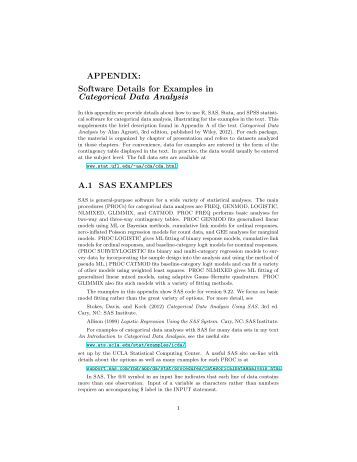Pastperfect Software Manual
Application migration checklist. One legacy migration approach is to repurpose old applications into resource-efficient and optimal applications in-house or for the cloud. If a legacy application has been successfully modernized in-house, it doesn't mean it can also be used as a Software as a Service, or SaaS, application.
| Developer(s) | PastPerfect Software Inc. (Formerly Pastime Software Company Inc.) |
|---|---|
| Stable release | |
| Platform | Windows 98, Windows XP, Windows Vista, Windows 7, Windows 8, Windows 8.1[2] |
| Type | Digital asset management |
| Website | museumsoftware.com |
Universities Love Pass Perfect! Universities just can’t ignore the buzz brought about by the new entry level FINRA exam. With the launch of the Securities Industry Essentials (SIE) Exam, professors who embrace the change are setting their students up for success with the Pass Perfect SMART Training Program. Dec 08, 2016 Creating Object Labels with PastPerfect. We are a small local historical society that just recently purchased PastPerfect software. We have entered in about 50 items so far. But now we want to create labels to attach to each object. The manual also has step by step directions for how to remove fields from such a report. About PastPerfect Online. The fast, affordable, and secure way to create a fully searchable online catalog of your PastPerfect data. Featured Collections.
PastPerfect Museum Software is an application for collections archiving. It is designed for museums, but may be used by various institutions including libraries, archives, and natural history collections. PastPerfect allows for the database storage of artifacts, documents, photographs, and library books.[3] PastPerfect is utilized by over 9000 museums nationwide.[4]
Comctl32 dll download. PastPerfect software My library’s archives/special collections uses PastPerfect to catalog their collection. PastPerfect seems to be a popular choice with museums and archives, and presumably the people choosing it know more about their needs than I (Coordinator of Library Technology) do. This feature is not available right now. Please try again later.
History[edit]
“The CollectionSpace team and community is made up of museum professionals, software engineers, and interaction designers.” PastPerfect: “PastPerfect is the world’s leading software program for collection and contact management. Over 9,000 organizations worldwide have achieved their goals using PastPerfect”. “PastPerfect Software, Inc. Is the world’s leader in collection and contact management. Over 10,000 museums, historical societies, archives, libraries, and other collecting institutions worldwide have purchased PastPerfect Museum Software since its first release in 1998. To this day, it remains an.
Past Perfect Software Manual


PastPerfect was introduced in 1998 as the primary product of the then Pastime Software Company Inc.[5] It was released in version 2 later the same year, updated to version three in 2001, and then to version four in 2004. It updated to version five in 2010, which remains the most current edition of the program. Pastime Software Company eventually changed its name to PastPerfect Software Inc. after 2007.[6]
Functionality[edit]
PastPerfect operates with four basic catalogs for sorting collections material. There is the archive catalog for storing documents, the photograph catalog for storing photos, tintypes, paintings, etc.; the objects catalog for storing three-dimensional artifacts, and the library catalog for storing books that would be included in the institution's library.[7] Images can be uploaded into the catalog, with multiple photos per record.[8] It also stores donor information, and automatically generates Deed of Gift forms and thank you letters upon completing certain steps of the accessioning process.[9] Certain extensions allow for the inclusion of Oral History records and transcripts[10] and there is an additional online function that allows institutions to digitize their collections and make them free to browse on the internet.[11]
PastPerfect also contains a contact list function, for storing donors, members, and employee contact information in a similar catalog format as the rest of the program.[12]
References[edit]
- ^'Previous Versions'. 2015. Retrieved 25 March 2015.
- ^http://www.museumsoftware.com/pp5.html
- ^Porter, S. (2007). PastPerfect Software Review. Retrieved from http://ercpierce.blogspot.com/2007/03/pastperfect-software-review.html
- ^PastPerfect Museum Software. (2015). Home Page. Retrieved from http://www.museumsoftware.com/index.html
- ^Porter, S. (2007). PastPerfect software review. Retrieved from http://ercpierce.blogspot.com/2007/03/pastperfect-software-review.html
- ^PastPerfect Software Inc. (n.d.) Previous versions. Retrieved from http://www.museumsoftware.com/previous.html
- ^Witt, B.S., Whittfield, J.C., Stepansky, A.J. (2012) Pastperfect software for museum collections: Version 5 users guide. Retrieved from http://museumsoftware.com/v5userguide.html
- ^Lathrop, S., McDaniel, S.L., & Richey, N. (2010). Exposing ourselves: A case study in collection management software implementation. Retrieved from http://digitalcommons.kennesaw.edu/cgi/viewcontent.cgi?article=1352&context=seln
- ^Porter, S. (2007). PastPerfect software review. Retrieved from http://ercpierce.blogspot.com/2007/03/pastperfect-software-review.html
- ^Price, S. (n.d.) Collection management systems: Tools for managing oral history collections. Retrieved from http://ohda.matrix.msu.edu/2012/06/collection-management-systems/
- ^Gomez, B. (n.d.) Online collections: Balancing automation and interpretation. Retrieved from http://www.slideshare.net/brianlgomez
- ^Witt, B.S., Whittfield, J.C., Stepansky, A.J. (2012) Pastperfect software for museum collections: Version 5 users guide. Retrieved from http://museumsoftware.com/v5userguide.html